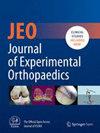This study assessed the accuracy and early clinical outcomes of the VELYS™ Robotic-Assisted solution for total knee arthroplasty (TKA).
A multicenter, prospective non-randomized 1:1 cohort study was conducted at five sites. Subjects underwent TKA with either manual instrumentation or with robotic-assistance (RA). RA procedures were the first conducted at each site, therefore, representing the adoption phase for each surgeon. Mechanical alignment was targeted in the manual arm, while the target and technique varied in the RA arm. The primary objective was a non-inferiority (NI) analysis of the accuracy of the hip–knee–ankle (HKA) for RA versus manual, with a 1.5° NI margin. The accuracy of the mechanical medial distal femoral angle (mMDFA), mechanical medial proximal tibial angle (mMPTA) tibial posterior slope (TPS) angles were measured. Adverse events (AEs) and patient-reported outcome measures (PROMs) were collected at 12 weeks and 1 year.
One hundred participants were recruited for both manual and RA groups, the mean preoperative demographics and PROM scores were similar. The primary endpoint NI analysis was successful (p < 0.0001). The RA group demonstrated improved alignment accuracy of the femoral and tibial components compared to manual (mMDFA 1.3 vs. 1.9, p = 0.0026, mMPTA 1.2 vs. 1.5, p = 0.026, TPS 1.7 vs. 2.8, p < 0.0001). Serious AEs occurred in fewer RA subjects than in the manual (6 vs. 16, p = 0.040). Mean PROMs at 12 weeks and 1 year in the RA group compared to manual were either equivalent or improved (Forgotten Joint Score and pain at 12 weeks).
This study found that the RA system can be safely adopted without adversely impacting the long leg alignment or increasing the risk of complications. Further, it was observed that the accuracy of the femoral and tibial component positioning was improved, and there were positive trends in the rate of serious AEs and some PROMs at early follow-up.
Level II.



